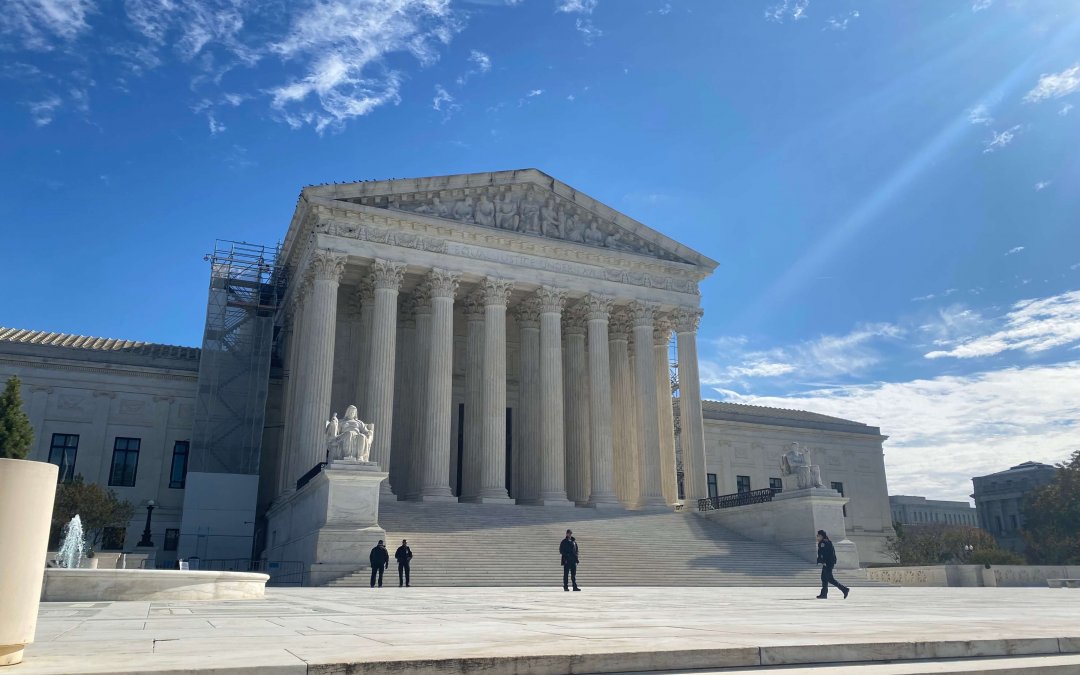WASHINGTON – The Supreme Court debated Tuesday whether two school board officials violated parents’ First Amendment rights after they blocked the parents from posting on their personal social media accounts in a case that wades into questions about regulations in a digital age.
The case, titled O’Connor-Ratcliff v. Garnier, centers around Michelle O’Connor-Ratcliff and T.J. Zane, two school board members in a district in San Diego, who were using their personal Facebook and Twitter accounts to communicate with the public, including soliciting feedback from constituents.
O’Connor-Ratcliff and Zane blocked Christopher and Kimberly Garnier, two parents who had repeatedly posted criticisms of the board members, although their messages didn’t involve threats or used profanity.
The Garniers sued the board members, who are called trustees in the district, arguing that their actions in blocking them constituted “state action” and violated their First Amendment rights. The district court ruled in favor of the Garniers, and the U.S. Appeals Court for the Ninth Circuit backed the ruling, saying that O’Connor-Ratcliff and Zane were acting “under color of law” given the “close nexus between the Trustees’ use of their social media pages and their official positions.” The trustees appealed their case to the Supreme Court, and the oral arguments in the case were held Tuesday.
Hashim M. Mooppan, the lawyer for the trustees, argued that individuals who hold public office are still private citizens. Mooppan further stated that because the local government authority did not control or facilitate the personal social media pages of the trustees, blocking the Garniers did not violate their First Amendment rights.
Justice Clarence Thomas asked if the same action taken on a site that is designated as an official school site would make a difference, to which Mooppan responded: “The question is who controls the account.”
Justice Sonia Sotomayor presented Mooppan a hypothetical in which an official site may be down, prompting officials to use their personal accounts to send out necessary information – essentially converting the official’s personal account into one acting on official capacity.
“In my experience, there’s a lot of customary laws, customary actions, that are not defined by law but are expected of government officials,” Sotomayor said.
Mooppan’s response was that while the trustees were government officials, they could also be private citizens who act in any personal capacity.
Pamela S. Karlan, the lawyer for the Garniers, based her argument on the fact that O’Connor-Ratcliff was performing actions that a normal citizen would not have been able to do – including posting instances when the official visited classrooms or spoke to school administrators.
She added that O’Connor-Ratcliff used the words “we” and “our” in her social media posts but switched to “I” on her campaign website, thus arguing that the social media accounts were not campaign accounts.
Justice Amy Coney Barrett, inquired about how social media is being used in general. For instance, a public official has duties to perform but doesn’t have an obligation to communicate those actions on any particular platform.
“Receiving feedback from constituents is an important part of their duty as trustees,” said Karlan, who was arguing that the social media platforms were maintained as an ongoing site for the exchange of information, thus constituting state action. Mooppan disagreed, arguing that they didn’t have a duty to use any platform like Facebook, even if they are allowed to use it.
“The action really does come down to how do we define ‘duty’” said Mooppan.
When asked by Justice Samuel Alito if it is practical to put pressure on public officials to distinguish between personal and official accounts, Sopan Joshi, assistant to the solicitor general, emphasized that this rule should not be decided by the Supreme Court on a federal level but rather by state and lower courts.
Joshi argued that these situations would have to be determined on a case-by-case basis, and that courts had to avoid the need for a “one-size-fits-all test.”
Justice Ketanji Brown Jackson asked Joshi if the government was concerned about the “potential privatization of government functions.” Joshi reiterated that such matters were best handled by the state.
Sometimes, social media users put so-called disclaimers on their accounts, like for instance: opinions are my own. Both sides debated what effect forcing a public official to have a disclaimer could have.
“Where in the Constitution are they obligated to put up disclaimers?” said Mooppan, who argued that putting up a disclaimer was, in itself, an imposition on free speech.
Karlan claimed that the disclaimer would allow for the distinction between what can be considered an official action and what is not. She argued that the school board said O’Connor-Ratcliff does not have the authority to speak for the board, so she’d need a disclaimer to that effect.
Kristin Lindgren-Bruzzone, deputy general counsel for California School Boards Association, told the Medill News Service that each school board member did not have the capacity to act in an individual manner because in most cases, a majority needed to vote to take action on any issue.
“Part of our argument is that they can’t be engaging in official state action on their individual, private Facebook pages that aren’t sponsored by the district because they cannot act individually in any way,” she said.
CSBA submitted an amicus brief supporting the trustees.
“I think there might be some middle ground that they reach between our position and the position of the Garniers, which is, it is state action, but you can avoid liability by having a disclaimer having some regulations, things like that,” Lindgren-Bruzzone said.



